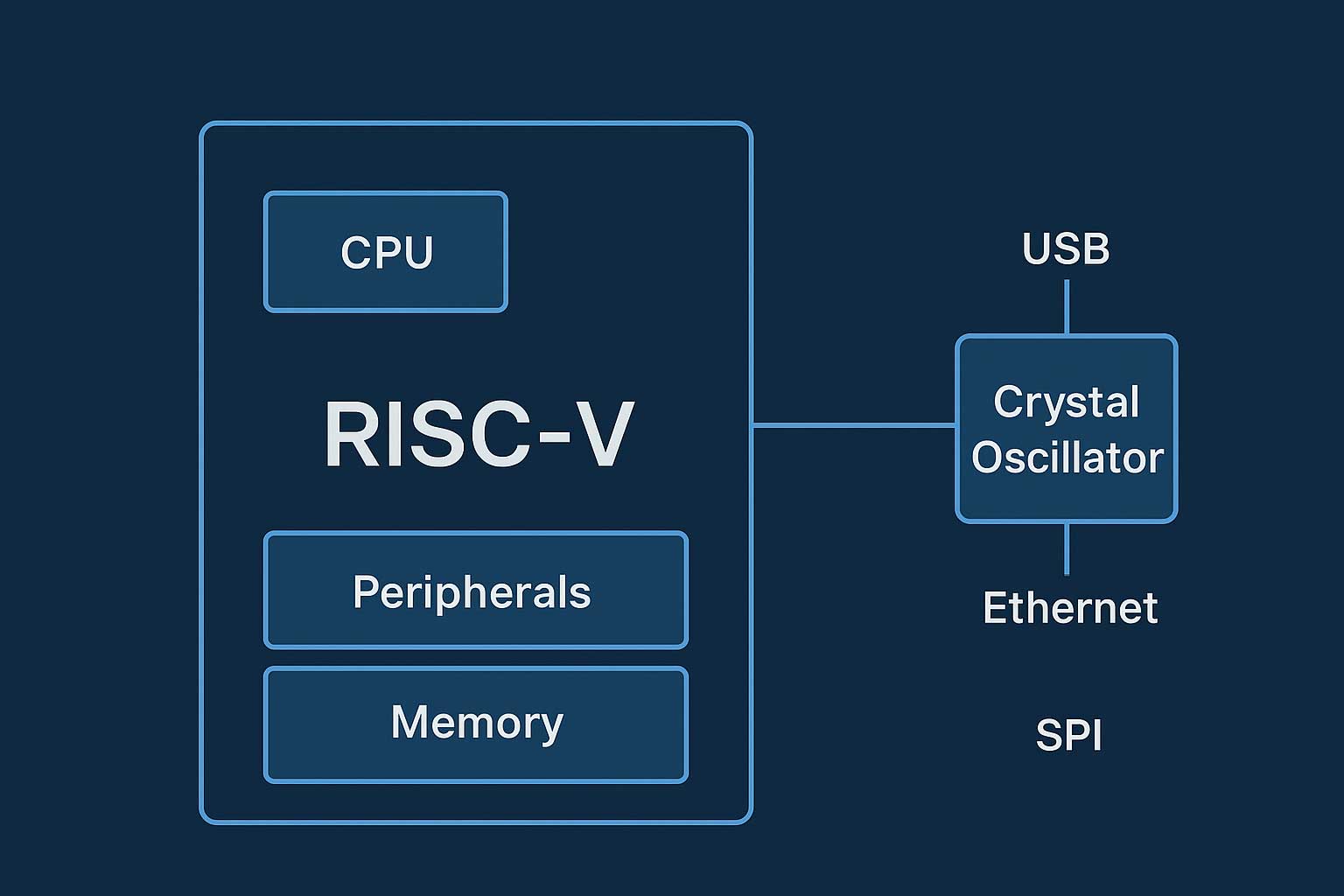
In recent years, RISC-V, as an open Instruction Set Architecture (ISA), has been rapidly emerging and widely adopted in IoT, embedded systems, AIoT, edge computing, and high-performance computing. However, regardless of how advanced the processor architecture is, it relies on one essential component — the Crystal Oscillator. Providing a stable and precise clock signal, it acts as the "heartbeat" of the RISC-V platform.

Role of Crystal Oscillators in RISC-V Systems
The main operating frequency of a RISC-V processor is typically generated by a Phase-Locked Loop (PLL), with its reference signal provided by a crystal oscillator.
High-speed interfaces such as USB, Ethernet, SPI, and UART require precise clocks to ensure stable data transmission.
Low-power RISC-V chips often use a 32.768 kHz crystal oscillator as the RTC time source, enabling timekeeping in standby mode.
RISC-V SoCs with high-speed interfaces such as PCIe, MIPI, and SDIO require high-frequency crystal oscillators (e.g., 100 MHz, 125 MHz) for data link synchronization.
Typical Application Scenarios
| Application Field | Oscillator Specification | Description |
| System Clock | 24–50 MHz,SMD5032 / SMD3225 | Drive CPU & main bus |
| USB / Ethernet | 25 MHz, 50 MHz,SMD3225 / SMD2520 | Accurate communication clock |
| RTC | 32.768 kHz,SMD2016 / Cylinder | Standby timekeeping |
|
(PCIe/SerDes) |
100–156.25 MHz,SMD7050 | High-speed data sync |
JGHC Crystal Oscillator Recommendations for RISC-V
| Application | Recommended Model | Package | Frequency | Stability |
| System Clock | OSC-JGHCO53 | SMD5032 | 24–50 MHz | ±10 ppm |
| USB / Ethernet | OSC-JGHCO32 | SMD3225 | 25 MHz, 50 MHz | ±20 ppm |
| RTC | Xtal-JGHCH21 | SMD2016 | 32.768 kHz | ±20 ppm |
| PCIe / SerDes | OSC-JGHCO75 | SMD7050 | 125 MHz | ±15 ppm |
As RISC-V architecture continues to expand in embedded and AI applications worldwide, the demand for high-precision, low-power, and highly reliable crystal oscillators is increasing. JGHC is committed to providing diversified crystal oscillator solutions for RISC-V developers and enterprises worldwide — from ultra-low-power MCUs to high-performance AI SoCs — ensuring every clock pulse is precise and reliable.